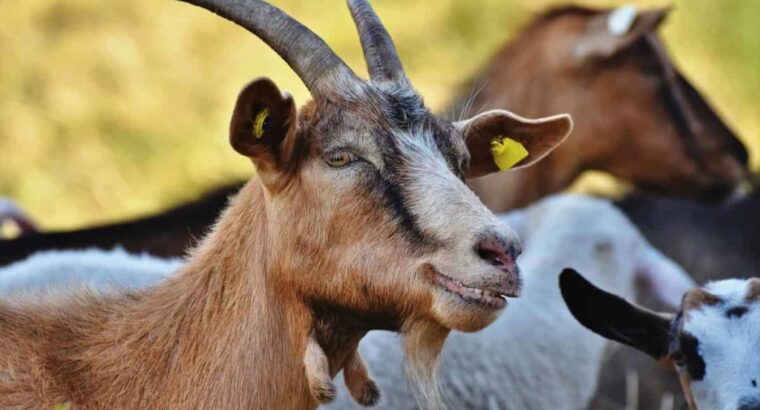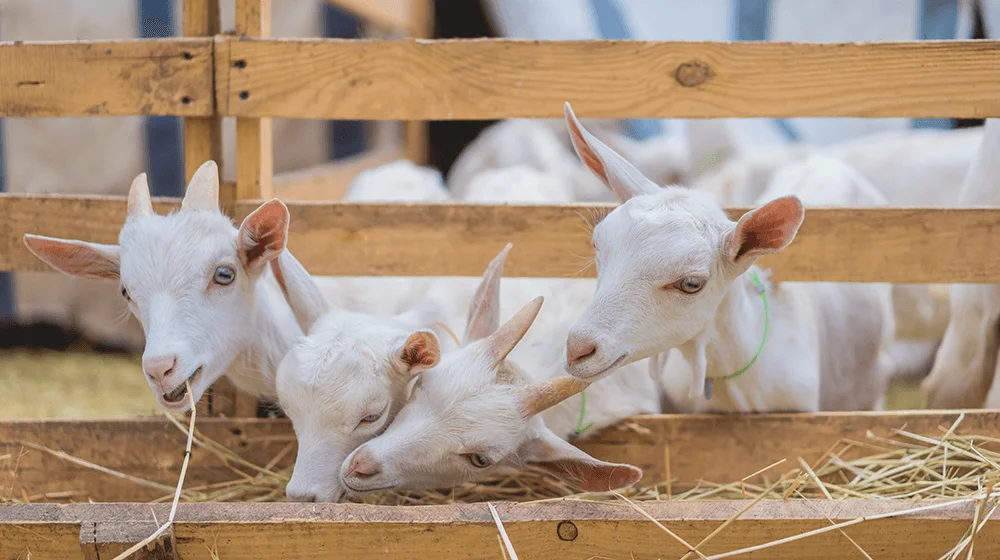The Business of Goat Farming in Nigeria: Is It Worth It?

Goat farming has long been an integral part of Nigeria’s agricultural landscape, providing livelihoods for countless rural households. In recent years, the sector has garnered increased attention due to its potential for profitability and contribution to food security. This comprehensive guide delves into the intricacies of goat farming in Nigeria, offering a step-by-step approach to establishing a successful enterprise, reviewing its profitability, and exploring avenues for income generation.
Introduction
Nigeria’s agricultural sector plays a pivotal role in the nation’s economy, with livestock farming being a significant contributor. Among the various livestock ventures, goat farming stands out due to its adaptability, relatively low startup costs, and the high demand for goat products such as meat, milk, and skin. As the Nigerian population continues to grow, so does the demand for these products, presenting lucrative opportunities for both small-scale and commercial farmers.
Embarking on a goat farming business requires careful planning, a thorough understanding of best practices, and a commitment to continuous learning. This guide aims to provide aspiring goat farmers with the knowledge and tools necessary to establish and run a successful goat farming enterprise in Nigeria.
Benefits of Goat Farming in Nigeria
Goat farming offers numerous advantages that make it an attractive venture for Nigerian farmers:
-
High Demand for Goat Products: Goat meat, known locally as “chevon,” is a staple in Nigerian cuisine and is favored for its taste and nutritional value. Additionally, goat milk and skin have substantial markets, both domestically and internationally.
-
Adaptability: Goats are hardy animals capable of thriving in various environmental conditions, from arid regions to humid areas. This adaptability makes them suitable for farming across Nigeria’s diverse climates.
-
Low Initial Investment: Compared to other livestock, goats require less capital to start. Their smaller size means they need less space, and their feeding requirements are more manageable, especially when they have access to grazing areas.
-
Rapid Reproduction: Goats have a short gestation period of about five months and can give birth to multiple kids at a time, allowing for quick herd expansion.
-
Economic Empowerment: Goat farming provides a source of income for rural households, contributing to poverty alleviation and economic development in rural communities.
Step-by-Step Guide to Starting a Goat Farm
Embarking on a goat farming venture involves several critical steps to ensure success and sustainability.
1. Conduct Market Research
Before starting, it’s essential to understand the market dynamics:
-
Identify Demand: Assess the local and regional demand for goat products, including meat, milk, and skin.
-
Analyze Competition: Evaluate existing goat farms in your area to understand their operations, strengths, and weaknesses.
-
Determine Pricing: Research current market prices for live goats and goat products to set competitive pricing.
-
Explore Potential Buyers: Identify potential customers such as local markets, restaurants, supermarkets, and individual consumers.
Conducting thorough market research ensures that your goat farming business aligns with market needs and positions you for profitability.
2. Select a Suitable Farm Location
Choosing the right location is crucial for the success of your goat farm:
-
Accessibility: Ensure the farm is accessible for transportation of goats and supplies.
-
Water Supply: A reliable source of clean water is essential for the health of the goats.
-
Grazing Area: Adequate land for grazing reduces feeding costs and provides natural nutrition.
-
Biosecurity: Select a location away from other livestock farms to minimize disease risks.
-
Proximity to Markets: Being close to markets or buyers can reduce transportation costs and improve sales efficiency.
A well-chosen location lays the foundation for a thriving goat farming operation.
READ MORE: Step-by-Step Guide to Cocoa Farming in Nigeria
3. Choose the Right Goat Breeds
Selecting suitable breeds is vital for meeting your production goals:
-
Meat Production: For meat production, consider breeds like the Red Sokoto, known for its high-quality meat and adaptability to Nigeria’s climate.
-
Milk Production: If focusing on milk, the West African Dwarf breed is renowned for its hardiness and milk yield.
-
Dual Purpose: Some breeds offer both meat and milk production benefits.
Source your breeding stock from reputable farms to ensure the health and quality of your herd.
4. Construct Appropriate Housing
Proper housing protects goats from harsh weather and predators:
- Design: Construct well-ventilated shelters that provide shade and protection from rain and extreme temperatures.
- Space Requirements: Ensure adequate space for each goat to prevent overcrowding and stress.
- Flooring: Use raised wooden floors or concrete to facilitate cleaning and prevent damp conditions that could lead to hoof infections.
- Fencing: Secure the farm with strong fencing to prevent escapes and deter predators such as wild dogs and thieves.
5. Develop a Feeding Program
Proper nutrition is essential for healthy growth and reproduction:
- Natural Grazing: Goats thrive on natural vegetation, so providing access to pasture reduces feeding costs.
- Supplementary Feeding: During dry seasons, supplement their diet with hay, silage, or formulated feed.
- Mineral Supplements: Provide essential minerals such as salt licks and calcium to enhance growth and reproduction.
- Clean Water Supply: Always ensure a clean and constant water supply, as dehydration can lead to serious health issues.
6. Implement Health and Veterinary Care

The Business of Goat Farming in Nigeria: Is It Worth It?
Maintaining the health of your goats is crucial for long-term profitability:
- Vaccination Schedule: Regularly vaccinate against diseases like Peste des Petits Ruminants (PPR), brucellosis, and pneumonia.
- Deworming: Conduct routine deworming to prevent internal parasite infestations.
- Hoof Care: Trim hooves regularly to prevent infections and mobility issues.
- Disease Control: Quarantine new goats before introducing them to the herd to avoid disease transmission.
7. Establish Breeding Management Practices
Efficient breeding practices help improve herd quality and production:
- Controlled Mating: Implement planned breeding schedules to maximize kidding rates.
- Selection of Breeding Stock: Choose strong, healthy bucks and does with desirable traits.
- Artificial Insemination: Consider AI for genetic improvement and disease control.
8. Maintain Accurate Record Keeping
Proper records help track farm performance and profitability:
- Health Records: Document vaccinations, treatments, and disease occurrences.
- Breeding Logs: Keep track of mating dates, kidding records, and reproductive performance.
- Financial Records: Maintain detailed records of expenses, income, and profit margins.
9. Develop Marketing and Sales Strategies
To ensure profitability, implement effective marketing strategies:
- Direct Sales: Sell live goats directly to consumers, butchers, and restaurants.
- Farmers’ Markets: Participate in livestock auctions and agricultural fairs.
- Online Marketing: Use social media platforms and websites to reach a wider audience.
- Value Addition: Consider processing goat meat, milk, or hides to increase revenue streams.
Profitability Analysis
Cost Considerations
- Startup Costs: Land acquisition, housing construction, initial stock purchase, and feeding expenses.
- Recurring Costs: Veterinary care, labor, feed supplements, and utilities.
- Unexpected Costs: Disease outbreaks, mortality, and farm maintenance.
Revenue Streams
- Meat Sales: The primary source of income for most goat farmers.
- Breeding Stock Sales: Selling young goats to other farmers.
- Milk Production: Goat milk can be processed into cheese and yogurt.
- Hide and Skin Sales: Goat skin has a market in the leather industry.
- Manure Sales: Goat manure is an excellent organic fertilizer for crop farmers.
Profit Margins
Profitability depends on factors such as breed selection, feeding efficiency, and market prices. On average, goat farmers can achieve a profit margin of 30–50% per goat if managed efficiently.
Challenges in Goat Farming
- Disease Outbreaks: Require proper biosecurity measures.
- High Feeding Costs: Can be mitigated by maximizing natural grazing.
- Market Fluctuations: Diversify income sources to stabilize revenue.
- Theft and Predation: Secure fencing and farm security are essential.
Conclusion
Goat farming in Nigeria presents a viable business opportunity with significant profit potential. However, success requires careful planning, proper management, and a strategic approach to marketing and sales. With dedication and best practices, entrepreneurs can establish a sustainable and profitable goat farming enterprise in Nigeria.
If you are considering starting a goat farm, what challenges or concerns do you foresee? Have you had any experiences in livestock farming that you’d like to share? Let us know in the comments below, and let’s discuss the best strategies to make goat farming a success!

Leave your comment